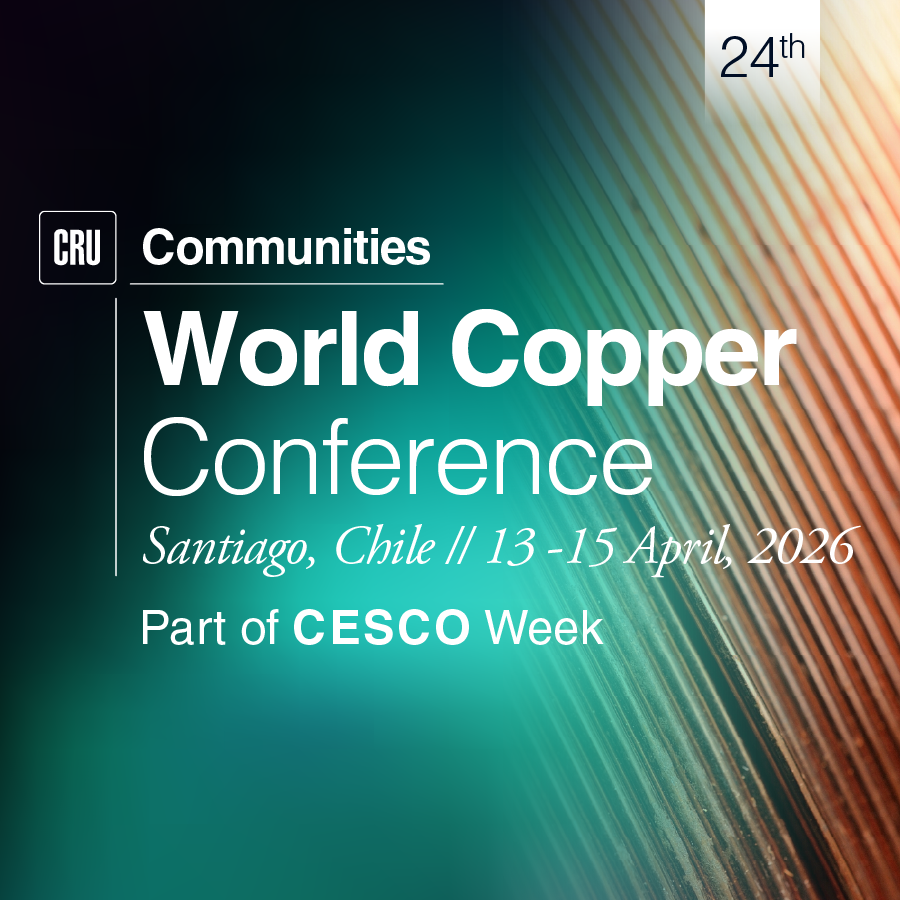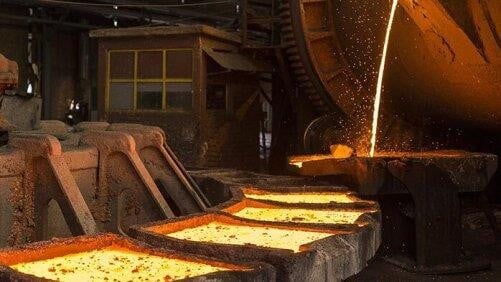Spot TC/RCs in China have fallen for several months; from a high of $95/9.5¢ in October 2017, to $75/7.5¢ in CRU’s most recent February assessment.
At the same time, miners and smelters settled annual contracts at the $82.25/8.225¢ 2018 benchmark set by Freeport McMoRan and Tongling Nonferrous in late-December, an 11% reduction compared to the previous year. In a market that is expected to show a deficit this year, due to new smelting capacity being commissioned in China, it is vital to get a real insight into future spot TC/RC levels based on an accurate and independent benchmark.
Copper concentrates spot TC/RCs on a downward trend
Recent history of the copper concentrates market suggests that there is plenty of room for further declines of spot TC/RCs in a tight market. In 2011, the copper concentrates market experienced a large deficit and trader-to-smelter spot TC/RCs reached as low as $25/2.5¢ on average in November and December. They had registered even lower monthly average values in April and May 2010, of just $8.0/0.8¢, with some spot transactions being concluded at close to $0/0.0¢ in sometimes very illiquid markets.
However, spot TC/RCs have been notoriously less volatile in recent years. At the beginning of 2017, the market experienced a significant squeeze, due to simultaneous disruptions at two important custom concentrate sellers, Escondida and Grasberg. The first was affected by a prolonged strike and the second by an export ban. The effect on spot TC/RCs was, however, moderate, with the March 2017 average reaching a low of $76/7.6¢. Smelters relied on a variety of mitigating strategies to weather the difficult times, such as moving forward maintenance shutdowns or advancing deliveries, while exceptionally strong copper-in-concentrate production at the end of 2016 had allowed stockpiles to be built up in advance.
Hence, when raw material availability is restricted and there is strong competition for scarce material, there is no definite floor for spot TC/RCs and they can potentially fall well below current levels. On the other hand, the smelting industry has been able to react to temporary shortages with market discipline.
In terms of industry expectations, a series of spot transactions concluded in recent months seem to indicate that lower spot TC/RCs are anticipated for the rest of 2018. Since October 2017, significant tonnages have been sold by miners to traders on the spot market for shipment between Q2 and Q4 2018 and 2019 as well, and a trend has emerged. For shipments in mid-2018, terms have been agreed in the $50/5.0¢’s, while terms below the $50/5.0¢ mark have been observed for late-2018 shipments. Even accounting for the spread between the miner-to-trader and trader-to-smelter markets, these numbers suggest that market participants are betting on a continuation of the declining trend in spot TC/RCs. Traders have taken long positions in the market, increasing their exposure later in the year, arguably on expectations of a tighter market and because of the risks to the supply of concentrates posed by ongoing and future labour negotiations in Chile.
However, the low levels at which these spot transactions have been concluded have surprised some market participants, who are not convinced that they are a good reflection of expected future market conditions. Common explanations include the fact that some traders are willing to offer lower terms as they build their books, that generous contractual terms have been offered by the sellers, or that the contango in the copper market has helped lower terms. Some go further and estimate that the release of material held by traders could soften the market in the near term.
Ultimately, we think that the best guide to future TC/RCs is the copper concentrates balance and a proper assessment of the risks to the supply and demand for concentrates. It is also crucial that market participants are able to rely on an accurate evaluation of TC/RCs and this depends critically on the use of a robust and transparent methodology combined with in-depth knowledge of the copper concentrates market, based on many years of experience. CRU’s long established benchmark possesses these key attributes.
CRU has accurate and trustworthy assessments
CRU provides comprehensive, accurate and up-to-date price assessments, combined with insight into the factors that are affecting markets. Over the years, we have developed TC/RC assessments for copper concentrates, which market participants use as a source of market information, as reference points for negotiations, for benchmarking transactions or for settlement in contract business. Thanks to CRU’s independence, in-depth knowledge of the industry and robust methodologies, our price assessments are accurate and trusted by the industry.
How does CRU assess spot TC/RCs?
The treatment charge (TC) and refining charge (RC) are a discount to the amount paid to the sellers for a copper concentrate, usually expressed jointly as a TC/RC. CRU publishes two spot TC/RC indices, which represent the averages of TC/RCs agreed over the previous month, one for the miner to trader market, and another for the trader to smelter market.
Price assessment definitions can be found here. The indices are a tonnage weighted average of spot transactions involving standard grade concentrates, priced on a delivered basis, CIF Asian port. The TC is expressed in US$/dry metric tonne of gross concentrate weight, and the RC is expressed in US¢/lb of payable copper. The trade size is specified between 10,000 t and 30,000 t, with shipment between prompt to three months.
CRU’s TC/RC assessments are based upon a strictly confidential survey of industry participants who are involved in buying/selling copper concentrates on the spot market. CRU´s contact list has been built over many years that CRU has been analysing the copper concentrates market and includes only market participants who, in the judgement of CRU analysts, have significant copper concentrates pricing and industry knowledge; and are trustworthy and reliable.
Industry participants provide their input via telephone and email surveys. These are conducted by experienced price assessment analysts in CRU´s copper team from CRU offices in London, Beijing and Santiago. The surveys are conducted in the two-to-three days before the publication of CRU’s price assessments. All input is strictly confidential, and access is restricted to price assessment analysts.
Submissions of transactions that are not representative are not considered in the calculation of the price assessment. Reasons for exclusion are that the quality of the concentrates is non-standard (i.e. the quality of the material is outside a specified range), that the transaction involves non-standard contractual clauses, or that there is unexplained variance from the average of other submissions.
CRU’s TC/RC final assessment is a weighted average of the price submissions that have been passed for inclusion in the calculation and normalized to a standard specification. In the absence of data relating to the volume of sales to which each price submission refers, CRU’s analysts attach a subjective weighting to each submission. Price assessments made by industry participants, bids and offers, can also be used to supplement submissions when there is a small number of submissions in a month.
















